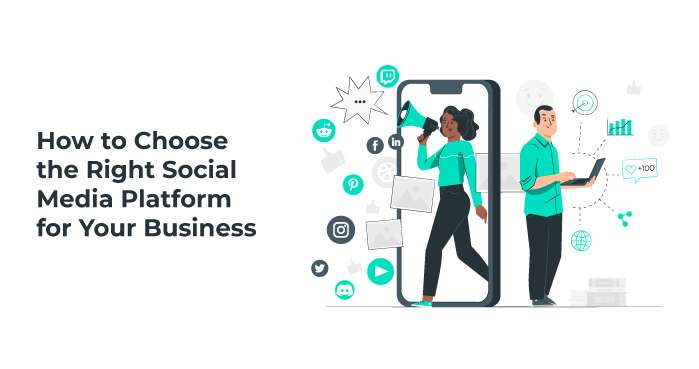Introduction
In the vast landscape of the internet, selecting the perfect platform for your online profile is crucial for success. This comprehensive guide will walk you through essential considerations, providing valuable insights to help you make an informed decision.
Defining the Purpose of Your Online Profile
In the digital age, your online presence serves as a virtual introduction to the world. Whether you're creating a personal blog, a professional portfolio, or a platform for creative expression, defining the purpose of your online profile is crucial. Your online persona can convey a multitude of messages, making it essential to align your goals with the overall purpose you envision for your virtual identity.
When considering the purpose of your online profile, it's important to think about the image you want to project. Is your profile meant to showcase your personal life, share your professional achievements, or serve as a canvas for your creative endeavors? Clearly defining this purpose will guide the content you create and the tone you use throughout your online presence.
For a personal profile, you may want to focus on sharing personal experiences, thoughts, and hobbies. In contrast, a professional profile should highlight your skills, qualifications, and accomplishments in a manner that appeals to potential employers or collaborators. A creative profile, on the other hand, provides a space for showcasing your artistic talents, be it through writing, photography, design, or any other form of creative expression.
By having a well-defined purpose for your online profile, you not only create a more engaging and authentic experience for your audience but also establish a clear direction for your content creation strategy.
Determining Specific Goals for Your Online Presence
Once you've identified the purpose of your online profile, the next step is to determine specific goals that align with that purpose. Whether you're aiming to expand your professional network, embark on a job search, express your personal thoughts, or promote a business, setting clear and achievable goals is paramount to your online success.
Networking
If your goal is to expand your professional network, consider focusing on creating content that highlights your expertise and industry insights. Engage with others in your field, join relevant online communities, and leverage platforms like LinkedIn to connect with like-minded professionals. Regularly sharing valuable content and participating in discussions will help you establish yourself as a thought leader in your niche.
Job Search
For those using their online profile as part of a job search strategy, tailor your content to showcase your skills, achievements, and professional background. Ensure that your profile is up-to-date with relevant information, and use keywords related to your industry to enhance discoverability by potential employers. Actively engage with job-related hashtags and communities to increase visibility within your target industry.
Personal Expression
If your primary goal is personal expression, focus on creating content that reflects your interests, experiences, and thoughts. Share personal anecdotes, hobbies, and reflections that resonate with your audience. Utilize platforms like blogs or social media to create a narrative that is authentic to you, fostering connections with individuals who share similar passions.
Business Promotion
For entrepreneurs or business owners, your online profile can be a powerful tool for promoting your brand. Create content that showcases your products or services, highlights customer testimonials, and communicates your brand values. Utilize social media marketing strategies, collaborate with influencers, and employ SEO techniques to enhance the visibility of your business profile.
Overview of Popular Social Media Platforms
Social media has become an integral part of our daily lives, offering a diverse range of platforms catering to different interests and communication styles. Understanding the key features and audiences of popular platforms can help individuals and businesses make informed decisions about where to invest their time and resources.
LinkedIn stands out as the go-to platform for professional networking. Geared towards career development and business connections, it allows users to showcase their resumes, skills, and achievements. Businesses can leverage LinkedIn for recruitment, brand promotion, and B2B networking. With its emphasis on professionalism, content on LinkedIn often includes industry insights, thought leadership articles, and job opportunities.
Known for its fast-paced and concise nature, Twitter is a microblogging platform that encourages real-time conversations. It is popular for news updates, trending topics, and engagement with a global audience. Brands and individuals often use Twitter to share bite-sized content, participate in discussions, and build a following through tweets and retweets.
Instagram, a visual-centric platform, focuses on photo and video sharing. Ideal for businesses with a strong visual appeal, it is commonly used by lifestyle influencers, photographers, and brands in industries like fashion, travel, and food. Instagram Stories, IGTV, and Reels provide additional avenues for creative expression and interaction.
Despite being one of the earliest social media platforms, Facebook remains a powerhouse with a broad user base. It supports various content formats, including text, images, and videos. Businesses can create pages, run ads, and engage with their audience through posts and comments. Facebook groups enable niche communities to form, fostering more targeted interactions.
Exploring Niche Platforms for Specific Interests or Industries
Beyond the giants mentioned above, there are numerous niche platforms that cater to specific interests or industries. These platforms offer a more targeted approach for connecting with like-minded individuals and accessing specialized content.
Twitch
Twitch is a streaming platform primarily focused on gaming, but it has expanded to include content related to art, music, and other creative endeavors. It offers a unique opportunity for brands and creators to engage with a community through live broadcasts.
Houzz
Houzz is a niche platform for the home design and renovation industry. It allows professionals and homeowners to connect, share ideas, and showcase projects. Businesses in the architecture and interior design sectors can find a dedicated audience on this platform.
Goodreads
Catering to book lovers, Goodreads is a platform for readers to discover, review, and recommend books. Authors and publishers can use it to connect with their target audience and promote their works.
Consideration of Professional Networking Platforms, Blogging Sites, and Portfolio Platforms
Apart from general social media, professionals and creatives may benefit from specialized platforms designed for networking, blogging, and showcasing portfolios.
Professional Networking Platforms
Platforms like Xing and Viadeo cater to specific regions and industries, offering a more localized approach to professional networking. Exploring these platforms can help individuals build connections in their niche markets.
Blogging Sites
Medium and WordPress are popular blogging platforms that provide tools for writers to share their thoughts and expertise. These platforms allow users to reach a wider audience and establish themselves as industry thought leaders.
Portfolio Platforms
For creative professionals such as artists, photographers, and designers, portfolio platforms like Behance and Dribbble offer a space to showcase their work. These platforms can serve as virtual resumes, helping professionals attract clients and collaborators.

Identifying the Demographic and Interests of Your Target Audience
Understanding your target audience is a crucial step in developing a successful online presence. Identifying the demographic and interests of your audience allows you to tailor your content and marketing strategies to better resonate with them. This knowledge not only enhances user engagement but also improves the effectiveness of your SEO efforts.
Start by conducting thorough market research to gather insights into the demographics of your audience. Demographic information includes age, gender, location, income level, and education. Use tools like Google Analytics, social media analytics, or surveys to collect relevant data. This information forms the foundation for creating buyer personas, semi-fictional representations of your ideal customers.
Once you have a clear picture of the demographics, delve into the interests and preferences of your audience. Analyze their online behavior, such as the type of content they engage with, the platforms they use, and the keywords they search for. This data helps you identify trends and patterns, enabling you to craft content that appeals directly to their interests.
Crafting content that aligns with your audience's interests not only attracts more visitors but also encourages them to stay longer on your site. Search engines like Google prioritize user engagement metrics, such as bounce rate and time spent on page, when ranking pages. Therefore, creating content that resonates with your target audience improves your SEO performance.
For example, if your target audience consists of tech-savvy individuals interested in the latest gadgets, your content should focus on in-depth reviews, comparisons, and discussions about cutting-edge technology. Use language and tone that resonate with this audience, making your content more shareable and increasing its visibility on social media.
Aligning Your Profile with the Platform Where Your Audience Is Most Active
Once you've identified your target audience, the next step is to align your profile with the platform where your audience is most active. Different demographics favor different social media platforms, and optimizing your online presence for the right platform is essential for effective digital marketing and SEO.
Start by researching the social media habits of your target audience. Are they more active on Facebook, Instagram, Twitter, LinkedIn, or perhaps newer platforms like TikTok? Analyze where your audience spends the majority of their time, and focus your efforts on those platforms.
Optimizing your profile on the chosen platform involves several key elements. First, ensure that your profile information, including bio, profile picture, and cover photo, reflects your brand identity and appeals to your target audience. Use language and visual elements that resonate with them.
Consistent posting is crucial for maintaining an active presence on social media. Develop a content calendar and schedule posts regularly. Tailor your content to the platform's specific features and audience expectations. For instance, Instagram is more visual, so high-quality images and engaging captions work well, while Twitter demands concise and trending content.
Engage with your audience by responding to comments, messages, and participating in relevant conversations. Social media algorithms often prioritize content with higher engagement, so actively engaging with your audience can boost the visibility of your posts.
Additionally, use relevant hashtags to increase the discoverability of your content. Research trending hashtags in your industry and incorporate them into your posts. This not only exposes your content to a broader audience but also enhances its SEO potential.
Tailoring Content to Platforms
Crafting the Perfect Profile
Your profile is your digital introduction. Profile Perfection: Learn the art of creating an enticing and professional profile that resonates with your chosen platform's audience.
Content Consistency
Consistency is key in the online world. Consistent Content: Explore strategies to maintain a consistent posting schedule that keeps your audience engaged.
Visual Appeal
The visual aspect is often underestimated. Visual Storytelling: Uncover the power of visuals in capturing attention and conveying your message effectively.
FAQs (Frequently Asked Questions)
Q: Can I have multiple profiles on different platforms?
Certainly! Managing diverse profiles allows you to cater to various audiences and objectives simultaneously.
Q: How do I choose between a blog and a social media platform?
Consider your content type, audience engagement goals, and preferred communication style to make an informed decision.
Q: Is it necessary to be on every popular platform?
No, focus on platforms aligned with your goals. Quality over quantity is crucial for impactful online presence.
Q: Can I switch platforms later if needed?
Yes, platform migration is possible, but it's advisable to establish a stable presence on one before considering a switch.
Q: How often should I update my profile information?
Regular updates are beneficial, but ensure changes align with your brand and messaging strategy.
Q: Are paid promotions on platforms worth it?
Investing in paid promotions can boost visibility; however, it's essential to assess the return on investment for your specific goals.
Conclusion
Choosing the right platform for your profile is a strategic decision that shapes your online identity. By understanding your goals, exploring platform options, and tailoring your content, you can create a powerful and engaging presence. Keep evolving with the dynamic digital landscape, and watch your profile flourish.

